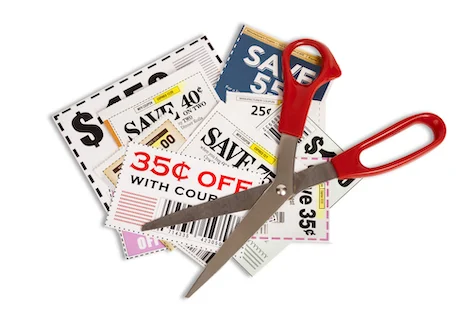Frugal living has become increasingly popular in recent years, as people look for ways to save money and live within their means. Countless frugal hacks can help you save a few bucks here and there, but not all of them are actually worth the effort.
A user asked in a popular forum the most frugal hack you’ve discovered that made the most difference, and here are the top picks.
1. Meal Planning Around Available Groceries

Image Credits: Deposit Photos.
“I started getting into the frugal life two years ago with my wife. Our most frugal hack so far is shopping grocery sales each week and then planning what we eat around that. We have cut our bill from $250 to $100 per week,” shared the original poster.
2. Always Pack Snacks

Image Credits: Deposit Photos.
A user shares “Always pack snacks. Bonus points if you cut up fruit rather than toss an orange in your bag, as you’re much more likely to eat it. I made like 3 dozen muffins at a time and frozen it.”
Related: 10 People Share Where They Draw A Line At Being Frugal (#1 Is My Fav!)
3. Mull Over Purchases For 5 Days

Image Credits: Deposit Photos.
“Telling myself to revisit something I want to buy in 5 days. Usually, I talk myself out of even spending” said one.
“Put stuff in a virtual cart. Leave it. Mull it over for a few days, as you say. The urge usually passes, and that’s when I realize it wasn’t a real need and something else – boredom, insidious advertising, etc.” added another.
4. Using Kitchen Towels Instead of Paper Ones

Image Credits: Deposit Photos.
“This is more environmental than frugal, but I used kitchen towels instead of paper towels for most tasks. A roll of paper towels used to last me two weeks, and now I buy a three-pack once a year,” shared a user.
Another user adds, “absolutely yes to this! I’ve been doing this for over a decade, sometimes people think it’s weird when I hand them cloth napkins even at a very laid-back summer bbq, but I don’t buy paper napkins and usually only have one or two rolls of paper towels in the house, so it doesn’t even occur to me to offer those.
I do 2-3 small loads of hand towel/cloth napkin/washcloth laundry per week and have reused the same clothes literally thousands of times. So much better for the environment, too. Sometimes I feel like the only person not walking around Costco with an expensive mega pack of paper towels in my buggy!!”
Related: From Saving Bread Bags to Reusing Tinfoil: 16 Bizarre Frugal Habits We Inherited From Our Parents
5. Menstrual Cup

Image Credits: Deposit Photos.
“Menstrual cup is a one-time expense that may last up to 10 years. I’ve had mine for 5 years, and I really had known about these since my early 20s.” shared one.
6. Using Kroger

Image Credits: Deposit Photos.
This is a rather long one, but very well explained on how to user Kroger to get the maximum benefits.
“So it takes a bit of planning and effort. We buy the visa gift cards with a Kr0ger credit card, so boom, double points right there (I know there’s an activation fee, but I just filled up 35 gallons for $40 last week, so what’s a few bucks compared to paying $130 for gas?). You then use the gift cards to buy groceries, giving you another round of points.
Any time you’re gonna eat out? Stop at Kr0ger and grab a gift card. Need to make a purchase on Amazon? Grab a gift card. Gonna buy a flight on southwest? DEFINITELY buy a gift card. Often, gift cards are 4x points, so I try to look out and time my purchases to match those. I also look for random extra points by shopping on weekends or whatever Kroger throws out there. Kr0ger sends me gas points-related coupons because they’re curated to what you buy.
This has helped us keep to a specific budget and regularly gotten us very cheap gas. Also, using the Kroger credit card to purchase your gas and scanning the barcode on the back of the credit card (instead of your Kroger membership card, don’t worry, when you get the Kr0ger credit card, they link the accounts), it will give you an additional discount. When we got ours, they were doing a promo of 55 extra cents off per gallon when you use at least 100 gas points (which you can see was very easy for us to meet). It’s 25 cents off a gallon with the same stipulations.
Another important aspect of this is you can get 35 gallons of gas at this price, so my wife and I try to time it right so we can fill up together (both on empty is about 28-29 gallons), and I also bring a couple gas cans. I’ve also got a siphon to put gas from gas cans into my wife’s car because she commutes while I work from home. By doing this, we can also ensure we’re filling up only once a month (unless we go on trips, but that will only happen later because my wife is due this month with our first).
I know not everyone wants to take another credit card, etc.; these steps really max out how many points you’re getting with gas. Plus, if you spend so much on the Kr0ger credit card, you also get cashback.” explained one.
7. Collecting water

Image Credits: Deposit Photos.
A user said, “We keep two 5L bottles by the shower and fill them up before taking a shower, so we aren’t wasting the running water while waiting for the water to be hot enough to shower. We then use this water to mop the floor and water plants, which has reduced our water bill quite a bit and helps us save water.”
Related: 10 Tips That Go Against All Frugal Advice, But Is Still Frugal For Some
8. Buying At Thrift Stores

Image Credits: Deposit Photos.
“I buy all my furniture and clothes (except underwear) in thrift stores.” said one.
9. Learning To Cook Better

Image Credits: Deposit Photos.
A Redditor shared, “It’s not a hack of any sort, but learning to cook well has been my best money saver. I rarely want to go out because I can generally cook better food at home.”
“Today’s dinner (egg roll in a bowl made with marinaded chicken thighs) came out to less than $2 per portion and was within my veggie-heavy diet.” said another.
10. Buy When On Sale

Image Credits: Deposit Photos.
“Having spares. Took me a long time to get my wife to do this. You have toothpaste, or a tin of coffee, or whatever. The next time it goes on sale, you buy it, even if it’s next week. Then once you finish the first and open the second, you watch for sales again.” said one.
“I bulk-buy all sorts like this. Box of deodorant, a box of facewash, a huge case of toilet roll, and a box of hand soap all loaded into my bathroom cupboard. (we have a shared rental, so bar soap isn’t hygienic)” added another.
11. Marry A Frugal Person

Image Credits: Deposit Photos.
A Redditor says, “Marry a frugal person. If you are Frugal and your partner is not, it can be a lifetime of pain. Partner up with a frugal person, and you can encourage each other on the journey and revel in the savings.”
12. Asking For Samples or Generic Meds

Image Credits: Deposit Photos.
“Any meds that are out of pocket, I asked the doc to prescribe the generic ones,” said one.
13. Downsize to one car

Image Credits: Deposit Photos.
“The most frugal thing my family does is only have 1 car. We walk, bike, and take the bus often. We recently got an e-bike to help make 1-car life easier. Some people look at my $1600 eBike as a bougie toy, but it’s so much cheaper than a car.” shared one.
14. Cutting Your Own Hair

Image Credits: Deposit Photos.
“I’ve been cutting my hair for over a decade now, and I’ve kept it quite short most of that time, often trimming every 2-4 weeks. Assuming an average price of $60, monthly haircuts would have been $7200.” said one.
15. Shifting To A Bidet

Image Credits: Deposit Photos.
“I bought a toilet seat bidet on Amazon for $60 and it’s probably saved me thousands of dollars on toilet paper.” said one.
More From Mrs Daaku Studio:

Image Credits: Deposit Photos
Strange but True: 10 European Habits That Leave Americans Scratching Their Heads.
We wanted to know what are the European traits that Americans find strange.
10 European Habits That Leave Americans Scratching Their Heads
10 Endangered Jobs That May NOT Be Around Much Longer

Image Credits: Deposit Photos
Some professions are becoming obsolete as technology, and societal shifts continue to shape the workforce. We bave listed some jobs that don’t see the light in the coming years.
10 Endangered Jobs That May Not Be Around Much Longer
Kill It: 10 Frugal Things That You’re Doing, But Aren’t Worth it ANYMORE!

Image Credits: Deposit Photos
While being frugal is a wise financial practice, not all frugal habits appeal to everyone. Some may find certain practices tedious, uncomfortable, or just not worth it anymore.
Kill It Now: 10 Frugal Things That You’re Doing, But Aren’t Worth It Anymore
11 Most Hated or Useless Jobs That People Wish They Could Eliminate From Society

Image Credits: Deposit Photos
The modern job market is diverse, and each profession has a unique value. However, specific jobs may be considered useless, providing little benefit to society.
11 Most Hated or Useless Jobs That People Wish They Could Eliminate from Society
Don’t Get Duped: 10 Biggest Rip-Offs That You Are Continuously Buying

Image Credits: Deposit Photos
As consumers, we often fall prey to clever marketing tactics and gimmicks that convince us to buy overpriced products or services that don’t live up to expectations.
Don’t Get Duped: 10 Biggest Rip-offs That You Are Continuously Buying
This article was originally published on Mrs. Daaku Studio.
